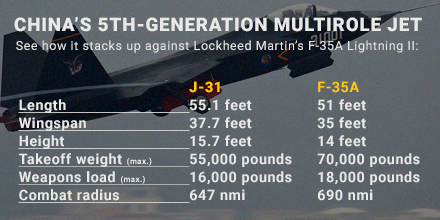https://dmlnews.com/report-russia-emerges-worlds-no-2-arms-producer/
Below is a report that DML News gives a 4 OUT OF 4 STARS trustworthiness rating. We base this rating on the following criteria:
Provides named sources
Reported by more than one notable outlet
Does not insert opinion or leading words
Includes supporting video, direct statements, or photos
Click here to read more about our rating system.
As the most reliable and balanced news aggregation service on the internet, DML News offers the following information published by APNEWS.COM:
HELSINKI (AP) — A Swedish think tank said Monday that Russia has emerged as the world’s second-largest arms producer after the United States. Russia surpassed Britain, which had held that spot since 2002 and remains Western Europe’s No. 1 arms maker.
The Stockholm International Peace Research Institute said in its annual report on the world’s 100 biggest armaments groups that the combined arms sales of Russian companies amounted to $37.7 billion in 2017, an 8.5 percent rise from a year earlier. Russia’s sales accounted for 9.5 percent of a worldwide total of $398.2 billion.
The report includes both domestic and foreign sales around the globe, but doesn’t include Chinese companies because of unreliable statistics, the institute said.
Siemon Wezeman, a senior researcher at the institute, said Russian producers of arms and weapon systems have been on a significant growth path since 2011.
“This is in line with Russia’s increased spending on arms procurement to modernize its armed forces,” Wezeman said.
For the first time in the report’s history, a Russian company — the Moscow-based and state-owned Almaz-Antey that makes advanced air defense systems among other things — was listed among the world’s top 10 weapons companies.
The report noted Russia started an initiative to consolidate its arms industry in 2007, a process that is expected to be completed soon.
Overall, the U.S. continued to dominate the list with 42 companies accounting for 57 percent of total sales, including the world’s largest arms producer, Lockheed Martin Corp.
Below is a report that DML News gives a 4 OUT OF 4 STARS trustworthiness rating. We base this rating on the following criteria:
Provides named sources
Reported by more than one notable outlet
Does not insert opinion or leading words
Includes supporting video, direct statements, or photos
Click here to read more about our rating system.
As the most reliable and balanced news aggregation service on the internet, DML News offers the following information published by APNEWS.COM:
HELSINKI (AP) — A Swedish think tank said Monday that Russia has emerged as the world’s second-largest arms producer after the United States. Russia surpassed Britain, which had held that spot since 2002 and remains Western Europe’s No. 1 arms maker.
The Stockholm International Peace Research Institute said in its annual report on the world’s 100 biggest armaments groups that the combined arms sales of Russian companies amounted to $37.7 billion in 2017, an 8.5 percent rise from a year earlier. Russia’s sales accounted for 9.5 percent of a worldwide total of $398.2 billion.
The report includes both domestic and foreign sales around the globe, but doesn’t include Chinese companies because of unreliable statistics, the institute said.
Siemon Wezeman, a senior researcher at the institute, said Russian producers of arms and weapon systems have been on a significant growth path since 2011.
“This is in line with Russia’s increased spending on arms procurement to modernize its armed forces,” Wezeman said.
For the first time in the report’s history, a Russian company — the Moscow-based and state-owned Almaz-Antey that makes advanced air defense systems among other things — was listed among the world’s top 10 weapons companies.
The report noted Russia started an initiative to consolidate its arms industry in 2007, a process that is expected to be completed soon.
Overall, the U.S. continued to dominate the list with 42 companies accounting for 57 percent of total sales, including the world’s largest arms producer, Lockheed Martin Corp.

